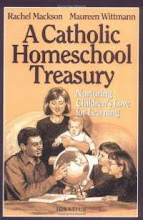As always, Homeschool Connections is offering lots of great history courses next semester. Below I'll give you all the little details for each course. In a nutshell, here are the fall history courses:
- The French Revolution: “Liberty, Equality, Fraternity, or Death” with Mrs. Stanley (6th to 8th grade)
- The Rise and Fall of the Missions of Alta California with Mr. Zehnder (7th grade and up)
- History: Making of the Modern World: Light to the Nations II with Mr. Zehnder (8th to 10th grade)
- The History of Latin America with Mr. Campbell (11th and 12th grade)
Registration is open. The Early Enrollment Price ends July 15th some courses are starting to fill up, so don't wait too long!
Click here: Homeschool Connections Registration Page (choose the semester and click on Search).
The French Revolution: “Liberty, Equality, Fraternity, or Death”
This
course is limited to 20 students.
Class dates: Wednesdays, September 23 to November 25,
2015.
Total classes: 10
Starting
time: 1:00
PM Eastern (Noon Central; 11:00 Mountain; 10:00 Pacific)
Duration: 55 minutes
Prerequisite: None
Suggested grade level: 6th to 8th
grade
Fee: $150 if you register on or before July 15, 2015.
$170 after July 15 for all 10 classes.
Instructor: Alison Stanley, JD
Course Description: In 1789, a three-part revolution began in
France due to grave inequality between the three classes (“Estates”), the
distressed financial condition of the French government and the widespread
dissemination of Enlightenment ideals. The rebellion was radical and violent,
leading to the abolition of the monarchy and execution of King Louis XVI. Although
the monarchy returned to this country, the French Revolution drastically
altered Europe forever by abolishing feudalism and promoting the principles of
equality and natural right.
Course materials: All course materials will be supplied free
by the instructor.
Homework: Homework
is approximately 30 minutes a week consisting of original reading from the time
period, as well as educational videos. A final project also will be
assigned which will be presented at the last class. Moreover, a final exam will
be given.
The Rise and Fall of the Missions of Alta California, Part One
Note: This is Part One of a 2-part course.
Students are expected to register for Part Two in the spring.
Class dates: Mondays, September 14 to December 7, 2015. No
class October 26 for midterm break.
Total classes: 12
Starting time: 1:00 PM Eastern (Noon Central; 11:00 Mountain;
10:00 Pacific)
Duration: 55 minutes
Prerequisite: None
Suggested grade level: 7th grade and up
Suggested high school credit: 1 full semester American
History
Fee: $175 if you register on or before July 15, 2015.
$195 after July 15th for all 12 classes.
Instructor: Christopher Zehnder, MA
Course description: This course will tell the
story of the mission system that Fray Junípero Serra established in California,
the various struggles he and his successors faced in bringing Christ and
civilization to the primitive peoples of California and the opposition they
faced from both Spanish and California officials. It is a dramatic story that
includes many dramatic events: Indian rebellion, heroic sacrifice, and
martyrdom. It is a tragic story, too, for it tells of the promise of the
mission system and how it was ultimately destroyed.
Course materials: Instructor will provide texts (primary source
and otherwise) in PDF format to students.
Homework: Weekly reading. Lectures will focus on those
events and ideas that are the keys for understanding the historical periods
under consideration. The teacher will evaluate the students by essay tests
given after Week III, Week V, and Week VII. Thereafter, evaluation will be
based on student's responses to questions in class.
History: Making of the Modern World: Light to the Nations II, Part One
Please note: Light to the Nations I is NOT
necessary to take Light to the Nations II.
This is Part One of a 2-part course. Students
are expected to register for Part Two in the spring.
Class dates: Mondays, September 14 to December 7, 2015. No
class October 26 for midterm break.
Total classes: 12
Starting time: 2:30 PM Eastern (1:30 Central; 12:30
Mountain; 11:30 Pacific)
Duration: 75 minutes (1 hour 15 minutes)
Prerequisite: None
Suggested grade level: 8th to 10th grade
Suggesting high school credit: 1 full semester World
History
Fee: $175 if you register on or before July 15, 2015.
$195 after July 15th for all 12 classes.
Instructor: Christopher Zehnder, MA
Course description: This course examines how the Modern World –
our world – came to be. It looks at the revolutionary ideas that created, first
in Europe and then the entire world, an understanding of man and his
relationship to God, the Church, and the state that was in many respects
radically different from the understanding of these things that prevailed in
the Middle Ages. Ideas influence deeds, and thus the course examines historical
events, showing how they flowed from the struggle between those who held to
traditional conceptions and those who embraced the new ideas. Events influence
ideas, and thus we study how the events of history helped modify and develop both
the new ideas and the traditional vision of the world. The course is divided
into two parts. Part I (first semester) begins with the scientific revolution
of the 16th and 17th centuries and concludes with the attempt, steered by
Prince Klemens von Metternich, to reestablish the ancient regime after the fall
of Napoleon's empire. Part II (second semester) continues the story, beginning
with a study of Romanticism and concluding with Vatican II and the
post-conciliar world.
Course materials: The text for the course (both Part One and
Part Two) is Light to the Nations II: The Making of the Modern World,
published by and available from http://www.catholictextbookproject.com/.
Homework: Students will read assigned portions of the
text. Lectures will focus on those events and ideas that are the keys for
understanding the historical periods under consideration. The teacher will
evaluate the students by essay tests given after Week III, Week V, and Week
VII. Thereafter, evaluation will be based on student's responses to questions
in class.
The History of Latin
America
Class dates: Mondays, September 14 to December 14, 2015. No classes Nov. 2 for
Midterm Break.
Total classes: 13
Starting time: 4:30 PM Eastern (3:30 Central; 2:30 Mountain; 1:30 Pacific)
Duration: 55 minutes
Prerequisite: None, Introduction to Christian Historiography and Modern
European History recommended (both available through Unlimited
Access).
Suggested grade level: 11th to 12th grade; 9th
and 10th grade students with above average reading and comprehension
skills.
Suggested high school credit: 1 full semester World History or American History
Fee:
$200 if you register on or before July 15, 2015. $220 after July 15th
for all 13 classes.
Instructor: Mr. Phillip Campbell
Course description: Americans routinely hear about problems all over the globe, but seldom
do we have the historical hindsight to understand the origin of these
conflicts. In "The History of Latin America", students will survey of
the history and culture of Central and South America, from the Spanish and
Portuguese colonial period through the age of the revolutions and into the
region's troubled modern period. Focus will be on South and Central America but
will also touch on the Caribbean with an emphasis on illustrating how the
region's past relates to its modern character.
Course outline:
Week 1: Geography: Introduction to the geography of south and central America
Week 2: Pre-Columbian Peoples: Cultures of south and central America prior to
Columbus
Week 3: First Contact: Initial contacts with the Europeans and the
Conquest
Week 4: Brazil: The calamitous history of South America's largest nation
Week 5: The Caribbean: Culture and history of the Caribbean islands
Week 6: The Catholic Church: The role of the Church in creating the culture of
Latin America
Week 7: Culture and Society: Distinctive cultural characteristics of Latin
America
Week 8: New Spain: The creation of Mexico
Week 9: The Age of Liberty: Revolution rocks Latin America throughout the 19th
century
Week 10: Banana Republics: Latin America and U.S. influence in the early
20th century
Week 11: The Strong Men: Pinochet, Peron, and the Latin American dictatorships
Week 12: The Spectre of Communism: Latin America's experiment with socialism
and communism
Week 13: Unresolved Issues: Contemporary problems in Latin America
Course materials: Provided free by instructor.
Homework: Five hours per week, including attending the live class, watching
recordings, completing reading assignments, online quizzes, and occasional
short answer or mini-essay questions.














